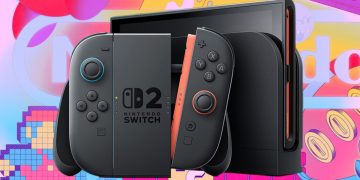Sure, here it goes:
—
Alright, so Apple came out with this thing—Vision Pro. And honestly, it’s like they took the idea of a headset and added their own particular “magic dust.” Could this thing get into a more wallet-friendly and less head-heavy version? Yeah, probably. And if it does, suddenly everyone and their dog might want one. At least, I would.
Apple, cheekily, calls this gizmo “tomorrow’s tech, today.” Fair, kinda? User experience—super easy; makes other headsets feel like clunky grandpas. Like, don’t get me wrong, it’s not all-powerful like some others out there. But what it can do, it does with flair. Still, lugging around this big ol’ thing feels like wearing a helmet from the future—and not in a cool way. So, would I suggest you rush out and buy it? For most folks, nah.
People are saying this Vision Pro thing is a dud. Apple flopped? Maybe, sorta, but not really. As someone who got their hands on it early on, I see the great stuff behind the scenes. Comparing it to saying a Ferrari isn’t great ‘cause it’s not as everyday-friendly as a Honda Accord—totally unfair.
No clue if Apple hit the numbers they wanted with this first-gen thing. My guess? They aimed high, as they do. So what am I sure of? This experience—super engaging, though crazy-pricey and not exactly lightweight.
Imagine this same gizmo—same bells, same whistles—but half the size and price. Mind blowing, right? Demand shooting through the roof? Oh, absolutely. Let’s visualize: weighing in at around—what was it?—310 grams? Tough? Sure, but doable. Lighter things exist! Look at Bigscreen Beyond—180 grams, though it’s not an all-in-one headset. But hey, they demonstrate that you can crunch down the sizes of those internal bits quite a bit.
Now about price, picture it at about $1,750. Again, not super cheap, yet much more doable. Especially if they can market it as the epic TV you never knew you needed. Maybe this is obvious: smaller and cheaper is always better in tech, right? Yeah, but Vision Pro has way more to gain in this arena than something like Quest. Quest is alright, just sometimes feels like an awkward piece of tech in your hands.
Vision Pro, though, just holds this potential—it’s all about setup. Shave off some size and price, and boom—it’s revolutionary. But hey, I get it, design-wise it’s no walk in the park. A skeptic could argue that the beauty in Vision Pro’s experience is intertwined with the price tag. High cost = high performance. Perhaps…
Yes, hardware plays a role. But more often? It’s the well-crafted software that shines. Take Quest 3, it technically boasts better resolution, but Vision Pro’s software finesse leaves users feeling like they’re watching something much crisper.
And, when I say shrinking costs and size will rocket Vision Pro skyward, I’m not even counting future tweaks that are bound to come. Maybe reduced blurs, sharper visuals, who can say?
Apple’s goalpost for its headset? High. Ease-of-use? Right on point. All that’s left is figuring out how soon they can deliver the same awesomeness in a more comfy and budget-friendly package. When they do, it’ll change everything.








![[Review] Lost Records: Bloom and Rage – Tape 2 for PS5 [Review] Lost Records: Bloom and Rage – Tape 2 for PS5](https://www.8bitnewsroom.com/wp-content/uploads/2025/05/Review-Lost-Records-Bloom-and-Rage-–-Tape-2-for-360x180.jpg)






































